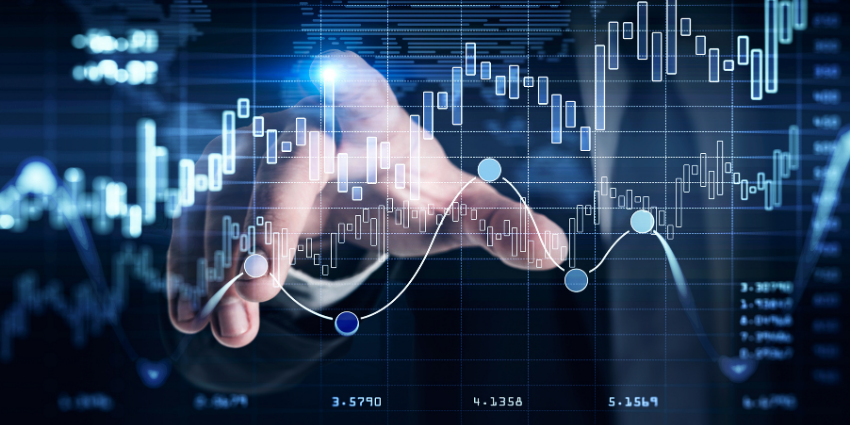Any company interested in CX knows that meaningful changes start with data.
Information gathered from your contact centre software, CRM, and other communication tools give you a behind-the-scenes view of your target audience. Used correctly, that data will tell you everything you need to know about your customer, and what they need from you.
However, before you can leverage the (roughly 2.5 quintillion bytes of) data you collect every day, you need a way to analyse all of that volume.
Analytics tools in the modern landscape help you to collect, understand, and translate your data, so you can put it to good use. There are two ways that analytics services can give you access to your data. One option is to evaluate historical information and use that data to make future predictions.
The alternative is to access a view of your ecosystem or data environment in real-time.
Here’s the difference between real-time and historical analytics.
What is Historical Analytics?
Perhaps the most traditional form of analytics, historical insights offer an overview of things that have already happened in your business. By collecting this information, it’s easier for companies to get an overview of how their business is performing, and how metrics are improving over time.
Though historical analytics are slower to update than their real-time counterparts, they still provide plenty of useful information. With these tools, companies can determine which times of the year they see the biggest spikes in call volume, so they can bring on extra staff if necessary, to help out. Historical analytics also provides an overview of things like CSAT scores, and weaknesses in team productivity.
Looking back at crucial trends in your business makes it easier to predict the future. Companies can access artificial intelligence and machine learning to pull trends from historical data and determine important trends for the future. Historical analytics will help you to forecast when you might need extra technology to deal with demand, or when your sales might drop.
Historical analytics are often the key to long-range planning. For companies keen to unlock the benefits of predictive insights, and ensure they’re prepared for anything, historical analytics are key. However, it is important to remember that historical trends can’t always predict the future exactly. Often, companies need to consider their real-time analytics too, and the overall state of the marketplace to gain a more accurate view.
Though historical analytics may seem a little more “old fashioned” than their real-time counterparts in the new digital world, they still have a lot of value to offer. Sometimes, we can only make confident decisions about the future of a company when we have a better view of the past.
What are Real-Time Analytics
Real-time analytics are a crucial tool in the era of customer service. Gartner tells us by the end of next year (2022), more than half of major business systems will include real-time context insights to improve decision-making.
Traditional analytics systems focus on gathering huge amounts of historical data to make assumptions about the future. Alternatively, real-time analytics systems give you an insight into all of the metrics that matter to your business in a live feed. Companies can use these tools to determine the sentiment of customers at any given moment or check how quickly agents are answering calls.
Real-time analytics are particularly useful for dashboards where managers need to track the performance of their teams. In the age of hybrid work, where fewer people are located in the same office space, real-time analytics allow for an overview of every employee’s performance.
These analytics can also act as motivation for staff members, showing them how they’re performing compared to colleagues and benchmarks in the moment. Each company can adapt the performance of their real-time analytics system to track the metrics most valuable to them.
With real-time analytics, you don’t just respond to and learn from problems after they’ve happened. When you have a consistent view of the present moment, you can also step in and solve problems as they happen, improving customer sentiment and business outcomes.
Imagine your company launches a new omni-channel contact centre for customer experience. Your real-time analytics dashboard would show you what’s going on within that omni-channel environment, including which channels your customers are using most often and which they feel the most positive about, thanks to sentiment analysis.
You can also use real-time analytics to track the performance of the technology in the moment too. For instance, your analytics system can tell you whether your call system is running smoothly and if you’re dealing with any dropped calls. Being able to see that in the moment ensures that you can get rid of quality issues before they cause significant problems for your brand reputation.
Real-Time vs Historical: Which is Better
Ultimately, neither real-time analytics nor historical analytics will come out on top for every analytical need your company might have. The reality is that both options have their benefits to offer, and both focus on very specific outcomes.
With real-time analytics, you’re taking a proactive approach to staying on top of customer service, engagement, and support. You can track your employee’s performance in the moment for agile decision-making reasons and ensure that staff members are aware of their performance levels. You can also use real-time analytics to get a better snapshot view of how your CX strategies are working.
Once you’re done using your real-time analytics, they can also supplement your historical data, allowing for more in-depth insights into the overall performance of your company. Your historical overviews will allow you to see crucial trends that influence the performance of your business, and the perception of your brand long-term.
You can also use your historical analytics to give yourself more room to potentially predict the future of your company, with access to AI and machine learning to help guide you.
The question isn’t whether real-time or historical analytics are best, but how can you combine the two to generate better results?







